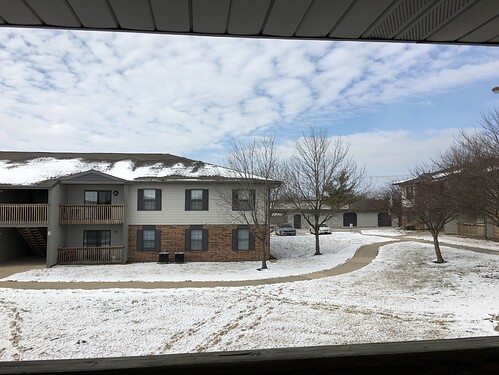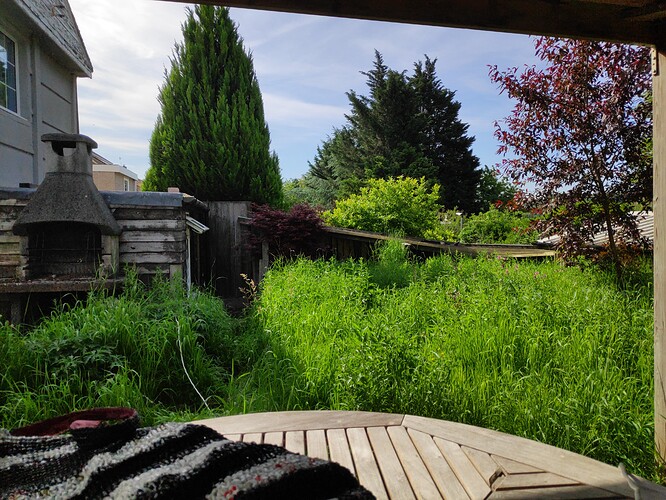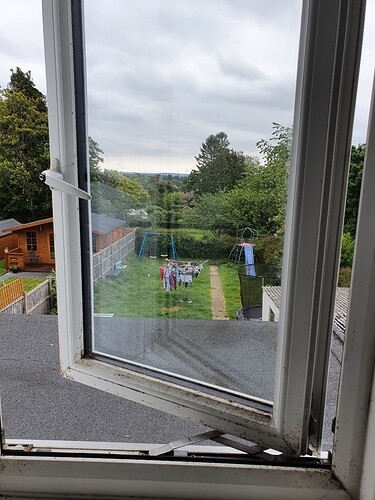Well, I’m in a flyover state, but our home is not a house but an apartment. Not everyone in the United States can afford a house.
In Australia the flyover country is millions of square kilometres of uninhabited sand and rock. I’ve flown over it: there’s nobody there. (Broome–Sydney flight path on Google Maps.)
I live in the “densely-settled coastal strip”, in a rural shire the size of Hertfordshire but with fewer than thirty thousand people. That’s about three-quarters of the population density of Kansas.
{Home: 3,150 square feet on one sixth of an acre. That was a large family home when built in 1965, but is a pretty typical size now (and families are smaller). I haven’t had it valued since the recent price rises, but I guess it would sell quickly at half a million Australian dollars. The house next door is much smaller and built of timber rather than concrete blocks; it just sold for A$389,500—asking price, before the “for sale” sign went up.}
Edited to add
I had a niggle because that figure seemed too large, went back to check it. It includes the balcony and garage, which it should not. Habitable interior floor space is onlt 22 squares (2 200 square feet).
3150 sqft would have been an enormous house by comparison here in 1965.
I thought I was useless in Fahrenheit degrees… Now I realize I am useless in square feet as well…
It was large here, too. The stereotypal Australian family home in the 1950s was “thirteen squares on a quarter of an acre”, and 1965 was the beginning of the change, at least out here. The couple who built this house arrived from the Netherlands in 1950 with all their possessions in two suitcases, and enough cash for a train fare from Sydney and breakfast when they arrived. By 1965 they had prospered by wholesaling frozen and refrigerated food, and this house was their statement of success.
293 square metres of floor space on a 651-square-metre block.
That’s a huge house in a not so big section… not much into gardening, I guess?
Correct. The traditional Australian residential block size — quarter of an acre — is the customary size of a peasant’s toft, and is big enough to grow your vegetables and keep hens for eggs. And the traditional three-bedroom family home was thirteen squares (120 square metres). But that wasn’t modern in the Sixties. This area had been reserved for a future high school, but in 1964 the state government decided that it was more valuable as residential allotments; they subdivided it and auctioned the lots. Since they figured that no-one was going to do any serious gardening they strove to squeeze in as many lots as they could get away with.
Most of the houses built on this subdivision are half the size of this one, but my actual street got bigger ones* because of what was on the other side. In any case the Vermeers were distributing frozen vegetables and had no interest either in growing fresh or in setting an example to others to do so.
* Mostly. There is a 13-square house built by the Housing Commission directly next to me, which was some sort of social engineering thing.
Quarter acre used to be norm here in NZ as well, but the majority of sections (at least where I live in Hawke’s Bay) have been split in two, to accommodate two houses of roughly 120 square meters and roughly 500-650 square meter sections, which to me is more than enough
Considering that when I was in the UK nobody had a clue about how big their house was in either square feet or meters (I guess to avoid getting depressed seeing the small number), the measuring units was bedrooms, I am pretty happy with the change. At least in square meters I can have an idea. Some UK houses were counting as a bedroom glorified cupboards.
Also, you have to consider the cost of heating. The smaller houses from the North of Europe (Sweden and UK come to mind for having tiny houses) make sense to reduce heating costs.
Our apartment is 83 square meters, and here’s the view off our balcony, nearly four months ago when we’d just moved in:
My house in Canberra was one of two 111-square-metre three-bedroom houses built on what had originally been a generous quarter-acre with a single fibro cottage on it. It was technically semi-detached, but the party wall was between my garage and the neighbours’ living-room. That was a very comfortable little house, and I liked not having a lot of grounds to look after.
I used to have a supervisor who had grown up in Hong Kong and previously lived in Cambridge, London, Paris, and Istanbul. Until he moved to Canberra he had never had lawn. He did not want lawn. It was a considerable annoyance to him that in Canberra in those days you could not get a spacious and comfortable flat. The city’s planners had planned an automobile-dependent suburban utopia, and the only medium-density housing they permitted was intended as cheap warehousing for the working poor. I hear that things are getting better there now for those of us who don’t wish to take our weekend walks behind a lawnmower.
I must admit before moving to NZ I was contemplating maybe even getting some woolly biological mowers…
At least here in the Bay you only have to worry about the lawn in Spring and Autumn. Summers are to dry for it to grow, and winters cold enough to keep it slow growing. And doing the lawn is one of my favourite times to listen to podcasts
I’ve probably mentioned it before, but 100 square metres of floor space on 46 square meters of land, that’s us. Houses on 3 sides, road on the other.
The lens of watching American TV imports.
Everyone either lives in a huge place or a tiny city apartment. There is no inbteween!
All right all right I’ll post the view from my office.
(“Wildflower meadow”; we had up the horrible quick-grow grass and seeded it with lots of random Stuff.)
Still is. I think it’s usefully functional: two small bedrooms is a different use of the same space from one large one. Sure, if you’re planning to throw big parties or have space-consuming hobbies the area of a room becomes important.
And now you’re there you don’t have any option, they just colonise the place? (Mind you, I have often felt that rent-a-goat should be a viable business model: take it from one overgrown garden to another.)
Most lawnmowers I’ve met are too loud for that. I’m all right, I have my scythe…
FVO “tiny” meaning “one day if I find a rich patron I might visit a place this big”. ![]()
Ditto
I truly have no idea about how big my house is. I refer to it as 3 bedrooms (although we have two pretty big bedrooms, the third is tiny and is now my office) but we usually talk about the size of the garden! Its one of the reason we moved out of London (the other reason was I just wanted to live in the countryside again!) - to get a garden without paying a huge fortune for it.
I also think, in the main, UK houses are fine for size - I don’t NEED a vast living area. I’m usually pretty stationary in my living areas because I go inside to rest/watch tv/play a game etc. I don’t NEED to feel like I’m going on a hike to get to the kitchen! ![]()
View from my office window
I don’t have @RogerBW excuse for the lawn - I mowed that just over a week ago and its gone mental again.
C and I have lived in nine apartments since we began cohabiting in 1985—an average of four years’ tenure. Having to find an apartment that’s the right size for us and the right price has made us aware of square footages. This last time we visited four complexes; the second and third were fairly nice, but would have been a tight squeeze, so when the fourth turned out to have space enough for our bookshelves we jumped on it.
My wife and I have space-consuming hobbies: computers, 3d printing, boardgames, knitting and sewing and fibre stuff, paintings, books. Quite a bit of the house ends up being “where we store the stuff for X”.
(It’s officially a 4 bedroom house but it’s more complicated than that. There’s one more that’s a sort of inverted L shape with the bed on a high shelf, which doesn’t have enough room to stand up in to be classed as a bedroom.)



